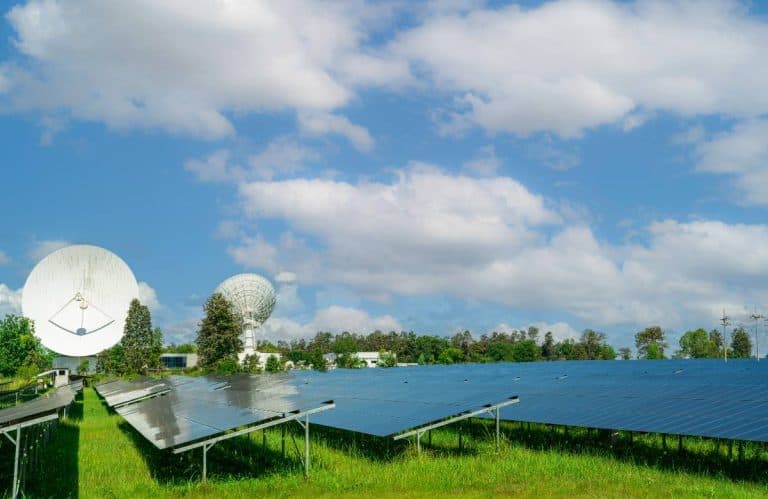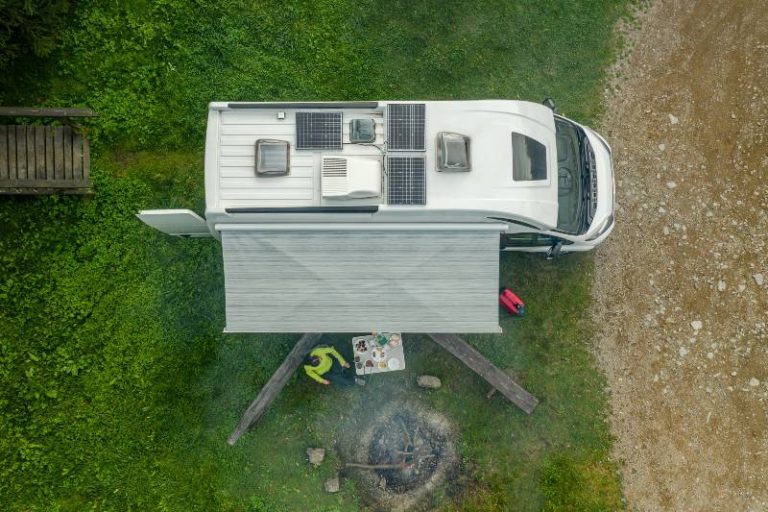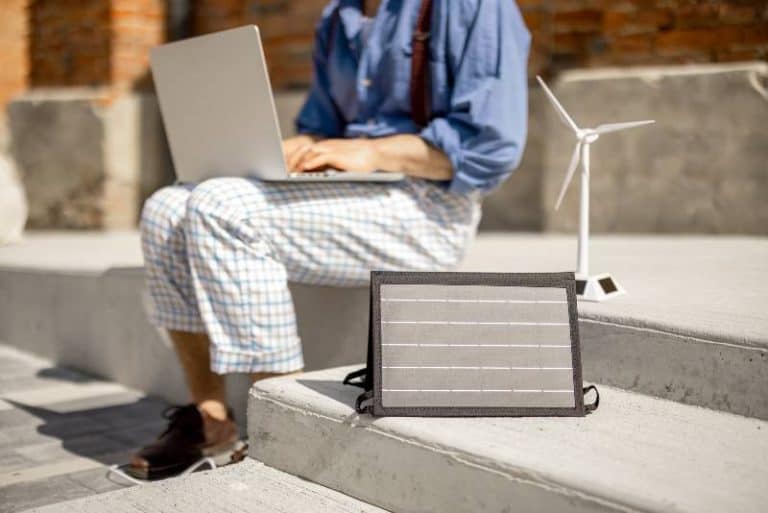What Size Solar Panel Do I need to Power a Refrigerator?
Do you want to go off the grid? If so, you will need to purchase a solar panel system. But how many solar panels do I need to run a refrigerator? In this blog post, we will provide you with all the information you need in order to make an informed decision. Keep reading for more information!
Key Takeaways
- A domestic fridge typically consumes between 100 and 250 watts of power.
- The size of solar panels you need to power a refrigerator depends on the size of the fridge.
- If you’re looking to install a solar panel to power your refrigerator, you’ll need to find out its power consumption rating, which is usually printed on the back of the unit.

How much energy does a refrigerator use?
A domestic fridge typically consumes between 100 and 250 watts of power. Over the course of a day, a fridge uses between 1 and 2 kilowatt-hours (kWh) of energy, which comes to about $150 per year. You can check your fridge’s power consumption for yourself by using a plug-in power meter.
By doing this, you can help to ensure that your fridge is running as efficiently as possible and that you’re not overpaying for your electricity usage. In addition, checking your fridge’s power consumption on a regular basis can help you to identify any potential problems early on so that they can be addressed before they cause significant damage. Thanks to modern technology, it’s now easier than ever to keep an eye on your home’s energy usage. So there’s no excuse not to do it!
How to calculate refrigerator electricity consumption?
In order to calculate the electricity consumption of your average refrigerator, you will need to know the wattage of the appliance. You can usually find this information on a label affixed to the back or side of the fridge. Once you have the wattage, simply divide it by 1,000 and then multiply by 24 to get the kWh/24h figure.
For example, if your fridge has a wattage of 71 W, its electricity consumption would be 1.704 kWh/24h. Keep in mind that this is just an estimate, and actual consumption may vary depending on factors such as how often the fridge is opened and closed, and the ambient temperature of the room. Nevertheless, this simple calculation will give you a good idea of how much electricity your fridge uses so that you can make informed decisions about energy usage in your home.
Find out How Many Watts Your Refrigerator Uses
How many hours does a refrigerator run per day?
A refrigerator is one of the most common appliances in a household. It helps to keep food fresh and safe to eat. But how much electricity does a fridge use? The average fridge runs for about eight hours per day. This means that, on average, a fridge uses 7.68 kilowatt-hours of electricity each day. Of course, this number can vary depending on the size and model of the fridge, as well as how often the door is opened and closed.
For example, a larger fridge will use more power than a smaller one. And a fridge with an ice maker will use more electricity than one without. If you’re interested in saving energy, it’s worth doing some research to find out how much power your fridge uses. You might be surprised at how much of a difference small changes can make.
How to measure sunlight for solar panels?
When it comes to solar panels, one of the most important factors is the amount of sunlight they will receive. After all, solar panels rely on sunlight to generate power. There are a few different ways to measure sunlight, but the two most common methods are pyranometers and pyrheliometers.
Pyranometers measure global radiation or the amount of sunlight that hits a given area from all parts of the sky. Pyrheliometers, on the other hand, measure direct radiation, or the amount of sunlight that hits an area from the sun only. Both methods can be used to give you a good idea of how much sunlight your solar panels will receive.
The amount of sunlight that your panels receive is important because it determines how much power they will generate. If you want your panels to generate a lot of power, you need to make sure they are in an area that gets a lot of sunlight. You can use pyranometers and pyrheliometers to help you find just the right spot for your panels.
Determine How Many Watts Your Solar Panels Produce
As the number of homes and businesses switching to solar power increases, it’s becoming more important than ever to understand exactly how your solar system work. Solar panels rely on a process called photovoltaic cells, which convert sunlight into electrical energy. The amount of electricity that a solar panel can generate is measured in watts, and the average panel produces between 50 and 300 watts of power.
To determine how many watts your average solar panels need to produce, you first need to calculate your average hourly wattage requirement. This can be done by dividing your monthly electricity usage by the number of peak sunlight hours in your area.
For example, if you live in an area that gets five hours of peak sunlight per day and you use 900 kWh of electricity per month, you would need 6,000 watts of power from your solar panels. By understanding how to calculate the number of watts your solar panels need to produce, you can ensure that your switch to solar power is as efficient as possible.
What about Peak Sun Hours?
How much solar power do you need to generate to run your home? This is a question that many people ask when they are first considering solar panels. The answer, of course, depends on a number of factors, including the size of your home, the climate, and your energy usage. However, one of the most important factors is the number of peak sun hours in your area.
Peak sun hours refer to the hours during the day when the sun’s intensity is highest. This means that different areas will have different peak sun hours based on their latitude and altitude. To maximize the output of your solar panels, you need to know when the peak sun hours are for your area. With this information in hand, you can make sure that your solar panels are getting the most sunlight possible and generating as much power as possible.
Additional components requirements
How big should a solar charge controller be to power a refrigerator?
A solar charge controller is a vital component of any solar power system, and the size of the controller will have a direct impact on the amount of power that can be generated. For example, a small 12-volt controller is sufficient for powering a laptop or small appliance, but it would take 300 to 400 watts of solar power to run a full-size refrigerator.
What size inverter do I need for my refrigerator?
A good thumb rule to follow when choosing an inverter is that it should be rated at 5 times the running wattage of your refrigerator. This will mostly ensure that the inverter can handle both the fridge’s run power as well as the surge power needed to start it.
How Many Solar Panels Do I Need for a Full-Sized Refrigerator?
Even if you’re not ready to go completely off-grid, solar power is a great way to save money on your electric bill. And one of the biggest appliances in most homes is the refrigerator. So, how many solar panels do you need to run a full-sized fridge?
The average fridge uses about one to two kilowatt-hours (kWh) of electricity per day. But that number can vary depending on the size and model of your fridge, as well as how often you open and close the door. If your solar photovoltaic (PV) system produces 1 kWh per day, you will need two solar panels to power your refrigerator.
Of course, the number of panels you’ll need to solar power your fridge will depend on the efficiency of your solar panels and the average daily sun hours in your area. If you live in an area with lots of suns, you’ll need fewer panels than if you live in a cloudy area. And if your solar panels are highly efficient, you’ll also need fewer panels.
So, how many solar panels do you need for a full-sized refrigerator? It depends on a few factors, but generally speaking, you’ll need at least two panels. And if you want to run other appliances on solar power too, like a washing machine or dishwasher, you’ll need even more panels. But going solar is a great way to save money and help the environment too. So it’s definitely worth considering if you’re looking for ways to reduce your carbon footprint.
How Many Solar Panels Do I Need for a small Refrigerator?
If you’re considering using solar panels to power your home, you may be wondering how many solar panels you need to power a small refrigerator. The answer depends on the specific model of the refrigerator and the amount of energy it consumes.
However, as a general rule of thumb, you will need at least four solar panels to power a small refrigerator. If you are looking to save money on your electric bill, then using a solar energy system is the way to go.
With the rising cost of electricity, more and more people are turning to solar power as a way to save money. Solar panels are a great way to reduce your carbon footprint and help the environment. If you’re considering making the switch to solar, be sure to do your research so that you can make an informed decision about which system is right for you.

Solar Panels Do I Need To Run A Refrigerator FAQs
Can a 300-watt solar panel run a refrigerator?
A 300-watt solar panel can power a small fridge. However, a full-sized refrigerator will require at least 400 watts of solar power.
What size solar panel does I need to run a 12V fridge?
If you want to use a solar panel to power a 12V refrigerator, there are certain things to think about. The first is the size of the solar panel. A 150-Watt solar panel connected in parallel with 200-Watt batteries will provide enough power for a 12V fridge. As a result, a 300-Watt panel system is an excellent choice since you can be sure to collect and store energy for long periods of time.
Do solar panels work in cloudy weather?
The short answer is yes, solar panels will still produce electricity on a cloudy day. Solar panels are able to generate power from both direct and indirect sunlight. Even when the sun is hidden behind clouds, the panel can still absorb enough light to create a current.
In fact, rain can actually be beneficial to your solar panel’s performance. Rain will wash away any dust or dirt that has accumulated on the surface of the panel, which can reduce its ability to absorb sunlight. So, while you may not generate as much power on a cloudy day, your solar panels will still continue to work even when the weather isn’t perfect.
Can one solar panel run a refrigerator?
In order to understand how solar panels could possibly power a fridge, it’s important to understand how electricity works. Solar panels rely on a process called the photovoltaic effect in order to generate electricity from sunlight. When photons from the sun hit the panel, they knock electrons loose from the atoms in the material. These electrons flow through the material to create an electric current. This current can then be used to power devices like fridges.
However, solar panels only produce electricity when they are exposed to sunlight, so you will need to connect the panels to both a battery and an inverter to provide constant power to your refrigerator. Even then, you would likely need a much larger solar panel setup than what is typically used in homes in order to generate enough power to run a fridge 24 hours a day. As such, it is not currently feasible to power a fridge using solar panels alone.
How big of a solar panel do I need to run a refrigerator?
To answer the question of how many solar panels are needed to run a refrigerator, one must first understand the wattage of the refrigerator and what size solar panel can generate that much power. The average refrigerators in the United States use approximately 350 kWh annually. A typical solar panel produces between 250 to 400 watts of power. This means that you would need at least two solar panels to run a fridge, and more if you live in an area with less sunlight.
How much does a 300-watt solar panel cost?
Solar power is becoming increasingly popular as a way to generate electricity, and as technology improves, the price of solar panels continues to drop. A 300-watt solar panel can typically be purchased for around $150, making it a very cost-effective option for those looking to go green. Additionally, solar panel prices have been dropping, so it’s a good time to invest in this renewable energy source. Not only is solar power good for the environment, but it can also save you money on your electricity bill. So if you’re interested in saving money and helping the planet, then a 300-watt solar panel is a great option for you.
What can a 500-watt solar panel run?
Today, there are a wide variety of appliances and electronics that can be powered by solar panels. For example, a 500-watt solar panel system will typically have an inverter that is at least 400 watts or bigger so that you can charge basic appliances and electronics such as laptops, lights, and a small fridge.
If you want to power more energy-intensive appliances such as air conditioners or washing machines, you will need a solar panel system with a higher wattage. In addition to powering appliances, solar panels can also be used to heat water or to generate electricity for an entire home. As the cost of solar panels continues to fall, more and more people are taking advantage of this clean and renewable energy source.
Conclusion
We hope this article was helpful in explaining some of the factors you need to consider when sizing a solar panel for your refrigerator. If you have any questions or need more help, please reach out to us on our website. We would be happy to assist you further!






